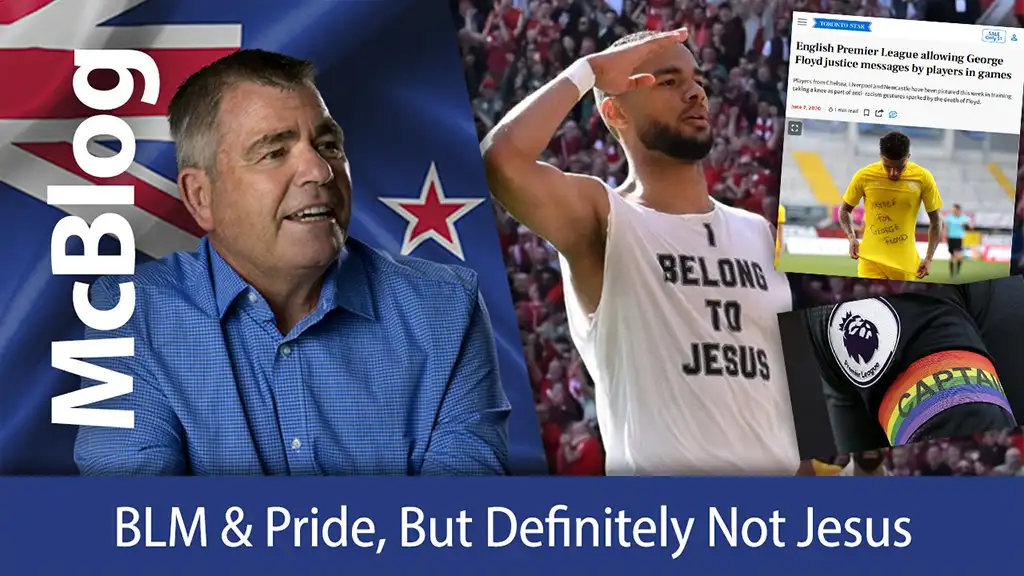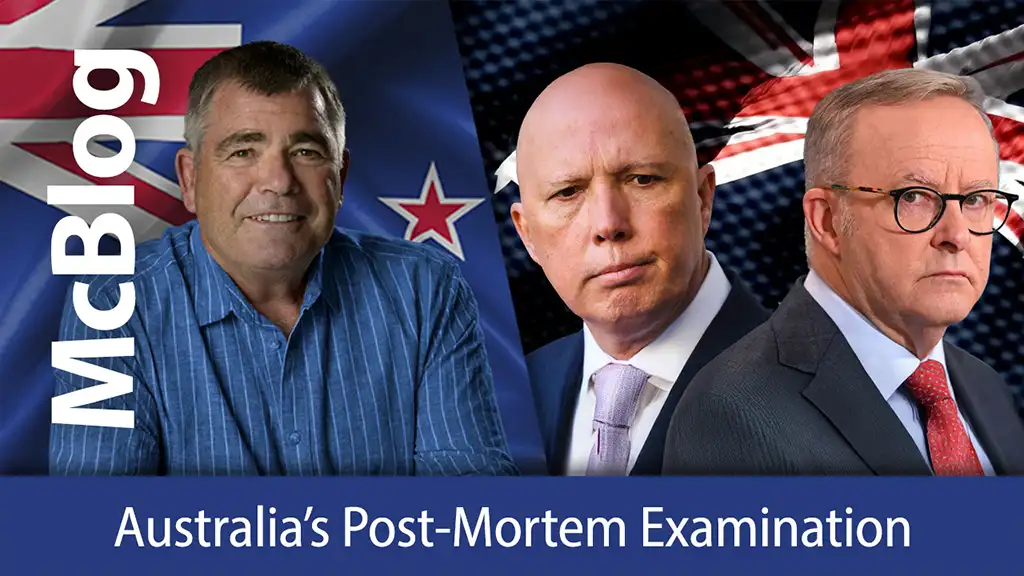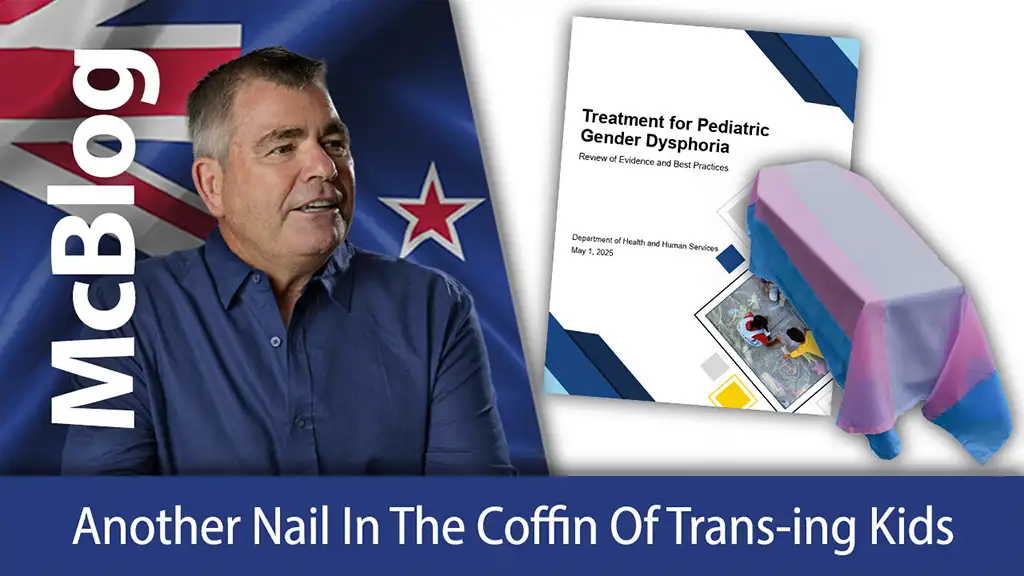The headline screamed “1 in 4 US teens identify as LGBTQ”. But is it accurate – and what does it really mean? In this episode, we analyse the claim, and show that while sexual and gender confusion are increasing, at the same time, the mental health of our young people is deteriorating – not surprisingly. It’s time we spoke the truth about biology and about the biblical standard for sex. For the sake of our young people.
Transcript:
The real story behind the claim “1 in 4 teens are LGBT”
The headline screamed “1 in 4 teens identify as LGBTQ, according to CDC study” – that the US-based Centers for Disease Control and Prevention. But is it accurate – and what does it really mean?
According to media reports:
Fewer teens than ever are identifying as heterosexual, according to a recent study from the Centers for Disease Control and Prevention. The CDC study found one in four high school students identifies as LGBTQ. Part of the reason this number could be so high is that a lot of these teens were asked for the first time if they were questioning their sexuality. The CDC surveyed 17,508 students in 152 schools nationwide to get these figures. Those numbers show that in 2021:
- 26% identified as LGBTQ
So that’s where the 1 in 4 comes from. But where do they fit in the alphabet group? Here’s the breakdown of the 26%
- 12.2% identified as bisexual
- 5.2% identified as questioning
- 3.9% identified as other
- Just 3.2% as gay or lesbian
- 1.8% said they did not understand the question
So in fact, that 26% is pretty generous. More than 5% are questioning and really don’t know. Almost 4% are “other”, whatever that means, and almost 2% didn’t understand the question.
And what does bisexual actually indicate. Bisexuality is a romantic or sexual attraction or behaviour toward both males and females or to more than one gender. Yep – same thing. Sexual attraction to anybody.
Of course, they might also be aromantic, autosexual, Bicurious, biromantic, demisexual, fluid, graysexual, pansexual, polysexual, sapiosexual, spectrasexual…
Yes these are all options, according to the so-called experts, and the list is growing every day. So many options for young people to be trendy and different and unique and stand out from the crowd – except it’s becoming more crowded to be trendy now.
Remember, this is 14-18 year olds they’re asking.
And the other really important thing to remember is that at the same time as these questions are being asked, and young people are asking themselves these questions already, there is critical theory being rammed down their throats.
Terms like “Systemic racism”, “White guilt” and “White privilege” are being enthusiastically embraced by schools, organisations, and governments. All minority groups are oppressed. Your group identity is the most important thing. Critical Theory views people, not in terms of behaviour, values or achievements, but in terms of your group membership. Gender and sexuality are two of those groups which afford you minority group status.
So to identify in the alphabet group of LGBTQIIA+++ immediately affords you minority group status. Identifying as bisexual makes sense. Especially in such a hyper-sexualised environment as we have in our culture today.
Do you remember that interview I did recently with the left wing Democrat-voting Californian mum who’s daughter firstly identified as pansexual, and then decided to want to transition to the opposite sex. Have a watch of how it all started and the peer pressure.
Ken – EMBED VIDEO https://www.youtube.com/watch?v=wSAP7BHfDuA&list=PLdBwirmorZtPS3O7ddQ8Q7ELueQQn7KbW&index=2&t=1904s&ab_channel=familyfirstnz
Now someone might be saying, Bob you just don’t understand. Teens know exactly where they’re at, and this data is rock solid.
But even LGBT academics are sounding a warning. According to the media report:
Tara Tull, an expert with Metropolitan State University of Denver, said the numbers are surprising but can be explained. “The one in four number is surprising, but at the same time, if you drill down into the actual data, it only shows that about 3% of youth identified as gay or lesbian, over 5% were questioning. And I think what’s happened in the last five or 10 or 15 years is we’ve really opened up space for people to explore their identities in ways that there didn’t used to be that social room to manoeuvre in,”
“Most teenagers do not feel normal, they’re different and they’re really struggling, and I think some of that struggle with being a teenager has just kind of come together with these issues of gender and sexual identity. And so I think there is just a lot more openness and conversation,”
Tull said there is also a tendency to lump in gender identity with sexual identity, so this could also play into the numbers of students who labelled themselves as questioning or other identifying as trans or nonbinary.
What this really all hints at is just how confused we’re making teens in this area.
But you can see that stress and confusion when you look at the other data around mental health which was also released by the CDC.
3 in 5 girls felt persistently sad and hopeless, a marker for depressive symptoms, in 2021, increasing substantially from 2011. 1 in 3 boys. Look at that growth there.
But when broken down according to sexual identity, you will see that LGBTQ+ students are sadder and have poorer mental health including self-harm than non-LGBTQ students – significantly more.
Now LGBT advocates will immediately say that’s because of discrimination and phobia – despite the fact that it’s now very cool to identify in this group and there’s whole months and days dedicated to celebrating it.
Here’s the telling graph. Look at the rates of drug use, alcohol use, marijuana use – much higher for LGBT students. And this is consistent with data from NZ in the Youth2000 research.
Here’s the question we all need to be asking. Rates of poor mental health for young people are increasing dramatically, but rates of poor mental health for LGBT are even greater. At the same time, more and more young people are thinking they can choose their gender, questioning whether they’re a boy or a girl despite their biological parts, which of the 112 genders they are, and they’re also wondering which of the 200-plus sexualities they may fall into.
Because being heterosexual is highly problematic today. In fact, under critical theory, it’s potentially a problem. Especially if you’re white as well, and male, or a Christian!!
And this is also being driven by the curriculum in schools pushing this ideology and indoctrination, and of course social media. Our young people are being saturated in a hyper-sexualised world – and they’re paying the cost.
Sexual and gender confusion are increasing – and at the same time, the mental health is deteriorating in our young people.
No connection? Of course there is.
The heading of the article in the New York Post was – Fewer teens than ever identify as heterosexual: CDC report. You would have heard the cheering from the LGBT activists.
According to Ritch Savin-Williams, a developmental psychology professor at Cornell University,
“Social media has added to this visibility that there are options that were not previously available. In a positive sense, it sort of says, ‘Hey, look, you don’t have to fit into these boxes.’”
And remember this is a societal trend not just amongst our young people.
According to a survey from Gallup last year, the percentage of Americans who identify as LGBT+ is now 7.1 per cent, more than double the 3.5 per cent that did in 2012. You’re actually probably surprised that’s it not way higher, and also that it’s so low given all the options that now fit in the alphabet categories. 86.3% say they are straight or heterosexual, and 6.6% do not offer an opinion.
And it’s not a trend over all ages. No – it’s younger generations who are being strongly indoctrinated with this ideology.
21% of Gen Z adults, those born between 1997 and 2003 (so aged about 20-26), said they were LGBT with Gallup noting: “The increase in LGBT identification in recent years largely reflects the higher prevalence of such identities among the youngest US adults compared with the older generations.” In comparison, 11% of millennials, 4% of Gen X, 3% of baby boomers and just 1% of those born before 1947 said they were LGBT+.
Here’s the trend line. Massive jump for Generation Z and also millennials. Little change for the others.
Why?
Because it’s based on the key word “Identification”. It’s not about “born this way”. It’s about “identification”.
Teens are being pressured to “identify” their gender under 112 categories, and their sexuality under 200+ categories, and then we wonder why they’re so stressed and struggling with their mental health.
You’re probably wondering – is this the same in New Zealand?
Yep – here’s the latest stats on NZ. Overall, its 4.2%.
But here’s the age breakdown. Out the left is 18-24 then 25-29 and onwards
But what about young people.
In 2011, the Youth2000 study out of Auckland University found that 3.8% of young people reported being attracted to others of the same sex or both sexes. This proportion is comparable to that found in the previous surveys conducted in 2001 and 2007. So just under 4 in every 100 since 2001.
But then in 2019, it had more than doubled to almost 10 out of every 100 (9%) reporting they were same-or multiple-sex attracted.
But note what the survey also showed.
Same-and multiple-sex attracted students had significantly higher depression and self harm rates. The survey also showed higher rates of sexual activity, substance abuse, cannabis use, and lower rates of health and wellbeing than heterosexual peers.
Here’s 3 quick graphs that were contained in a report we wrote in 2020 which shows overall mental health rates in NZ:
Anxiety disorder % for 15-24 year olds
Depression and/or bipolar diagnosed 15-24
Hospitalisations for mental and behavioural disorders for 0 – 19 years
These NZ stats are similar to the US.
Here’s the other line that’s increasing – similar to NZ’s. Identification.
I go back to my original statement.
Sexual and gender confusion are increasing – and at the same time, the mental health is deteriorating in our young people.
It’s time we spoke the truth about biology and about the biblical standard for sex.
For the sake of our young people.
Pretty heavy topic. So let’s finish with some humour from US comedian Bill Maher – who actually asks some interesting questions…. Let me show you a couple of clips to wrap up this episode



